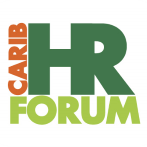 Globally, 76.3% of women age 25 to 34 worked in 1998 versus 34% in 1950[1]. This increase continues into 2008 and we as employers and HR Professionals in the Caribbean region need to address this gender skew in our employee population.
Globally, 76.3% of women age 25 to 34 worked in 1998 versus 34% in 1950[1]. This increase continues into 2008 and we as employers and HR Professionals in the Caribbean region need to address this gender skew in our employee population.
At Guardian Holdings we have 78% females and only 22% males. At Scotia Bank Trinidad[2], 73% of their workforce is females. These statistics provide the employer with key information to craft a variety of work options to accommodate the increasing number of women in the workplace. One may even look at the age demographic to determine how many women are at the child bearing age.
We all speak about a war for talent and how important it is to retain our human capital. Our work conditions, benefits and work options maybe tailored to this large group of women in our workforce and thus prove to be a significant retention strategy.
Child care is a major concern for mothers in the workplace especially with the increasing difficulty to find trustworthy care givers. The mother either depends on her extended family or a nursery to provide the care when she is at work and or the school depending on the age of the child. However, when these options are not available, the mother may have to miss work and stay home.
This is an opportunity for an employer, especially one with a two thirds women majority in the population, to provide the needed assistance. In Trinidad and Tobago, the 2007 budget clearly identified child care solutions as essential for the development of the domestic social sector and improved national productivity. The Income Tax Act (as amended by the Finance (No.2) Act of 2007) allows for deduction for expenditure actually incurred for the construction or setting up a child care / homework facility for the employees’ dependants (minors) up to a maximum of $500,000 TT for each facility, not exceeding 3 million TT in the aggregate in the year on income.
The employer may structure the arrangement in a variety of ways that may range from absorbing the full cost to partial subsidy to outsourcing to an already set up facility. This may depend on the cost of facility, availability of space, cost to maintain and operate the facility while considering the benefits, both tangible and intangible.
A tangible benefit maybe decreased absenteeism rates. This can calculated using the current absenteeism rate[3] for the women[4] in the organisation as a baseline with the proposed decrease in absenteeism post facility.
Usually a parent has to leave work to pick up their child/children from school or nursery and drop off somewhere else then return to work. This delay in time may also be avoided with the provision of this facility. Even if the facility is not on-site but off site, because the facility is operated by the employer, the time to pick up the children may coincide with the end of a workday. The employee may continue to be productive without the interruption after lunch. This can also be monetised[5].
Retention rates may increase especially among the specific group of employees this benefit will assist.
The intangible benefit of a parent feeling at ease knowing that his / her children are close by and or well taken care of. This will allow for improved productivity per employee[6].
The increase of single parent homes is also significant in Trinidad and Tobago, where the mother must function in many roles to raise their children to become productive young adults. As a result, there are competing demands for her time.
An employer may consider offering the options of flexitime, telework for specific jobs or re-locating the employee to a location closer to home[7]. For example, a job like an Underwriter may be able to work from home. We have been doing a pilot with this work option and it has been working well for us thus far. The candidates who are involved in the pilot are so appreciative and very thankful. They have increased their output because they are no longer bogged down to answer operational queries and are able to work when they want at home. It is important to have definite parameters for this work arrangement with clear guidelines on reporting with periodic visits to the office.
Mothers of young babies are encouraged to breast feed their babies. However, after three months, the mother has to return to work, which makes breastfeeding challenging. The mother has the option of expressing milk and storing it, however, at the workplace, there may not be a dedicated private space to facilitate this activity or a refrigerator to store the milk or even the employee may not be permitted the time needed ( 20 minutes) to express the milk.
An employer may take the opportunity to provide a space, time, and a place to store the milk to assist the mother and the child to continue reaping the benefits of breast milk.
Breast fed children are less ill and as such the mothers will take less time off to care for their infants. The improved health of the children also decreases the claims made against the company’s health insurance resulting is lower health care costs. The employee maybe more productive, have greater loyalty and increased morale.
The employer may boast about all the family friendly policies to gain brand equity and be positioned as a employer of choice. Thereby, improving the organisation’s ability to attract and retain the shrinking talent pool.
[1] According to the U.S Department of Labour: Changes in Women’s Work Participation
[2] Revealed by Martin De Gannes at AFETT Child Care Symposium on 14th July 2008
[3] Absenteeism can be monetized by using an average salary for target group multiplied by the number of days plus cost of any replacements for the periods of absence.
[4] Mothers with minor dependants
[5] One can find the average hourly rate of pay multiplied by the number of times this occurs for the month
[6] This is challenging to track but not impossible. One can look at the number of objectives, deliverables or targets achieved before and after this service. If the organization uses the balanced scorecard, it will be easier to track.
[7] This will be applicable to employers with branches spread geographically through out the island
[email_link]
